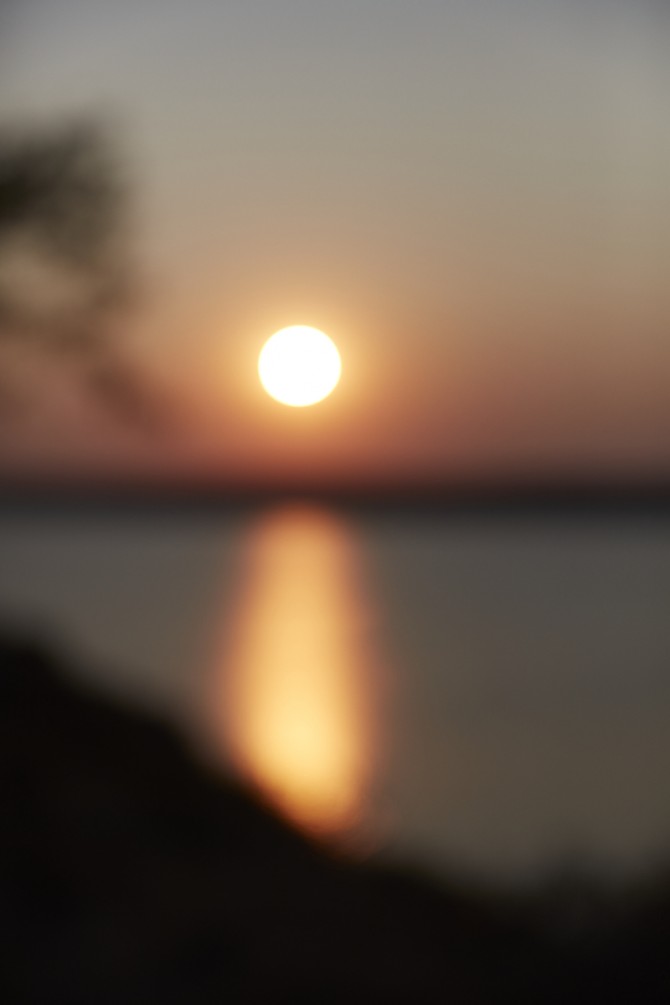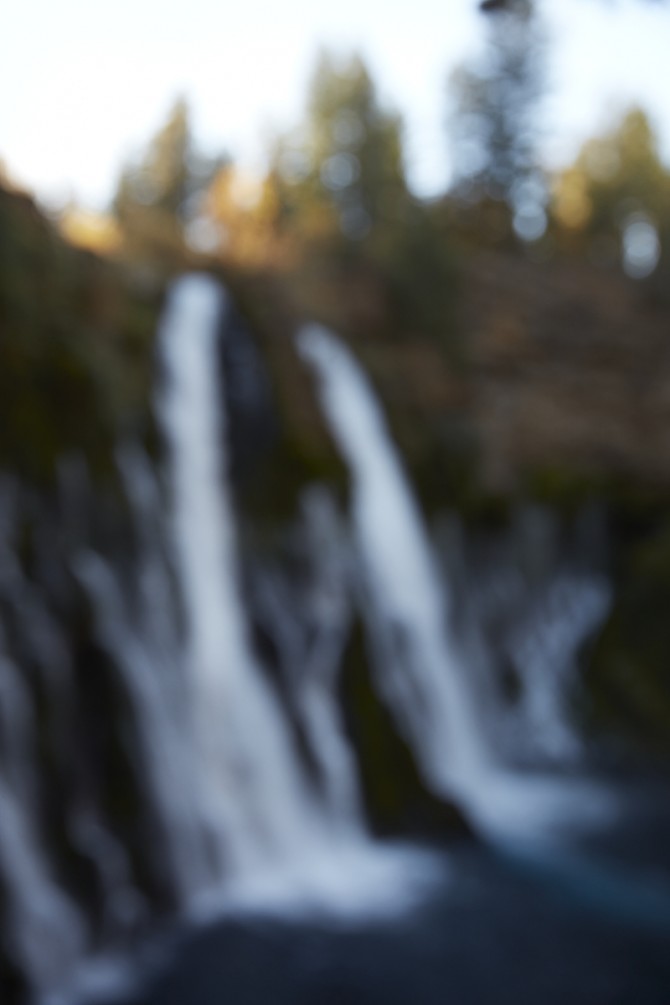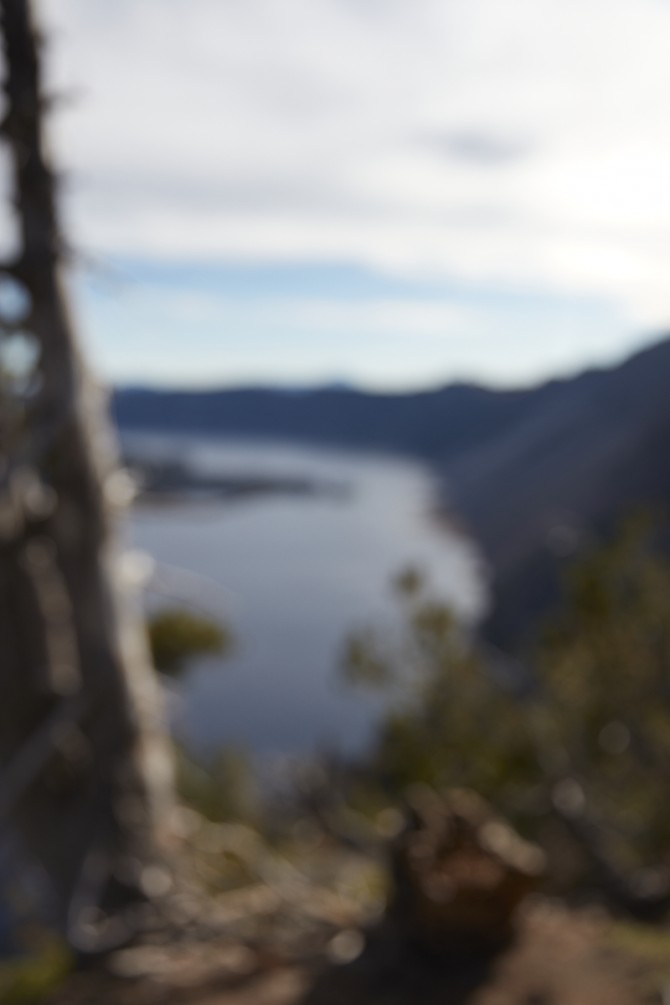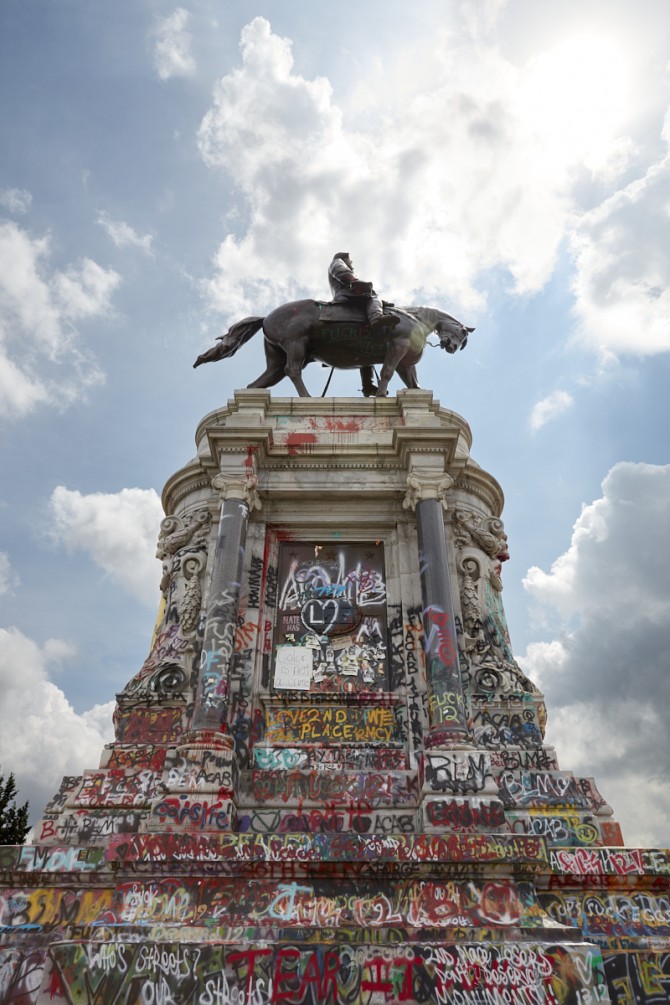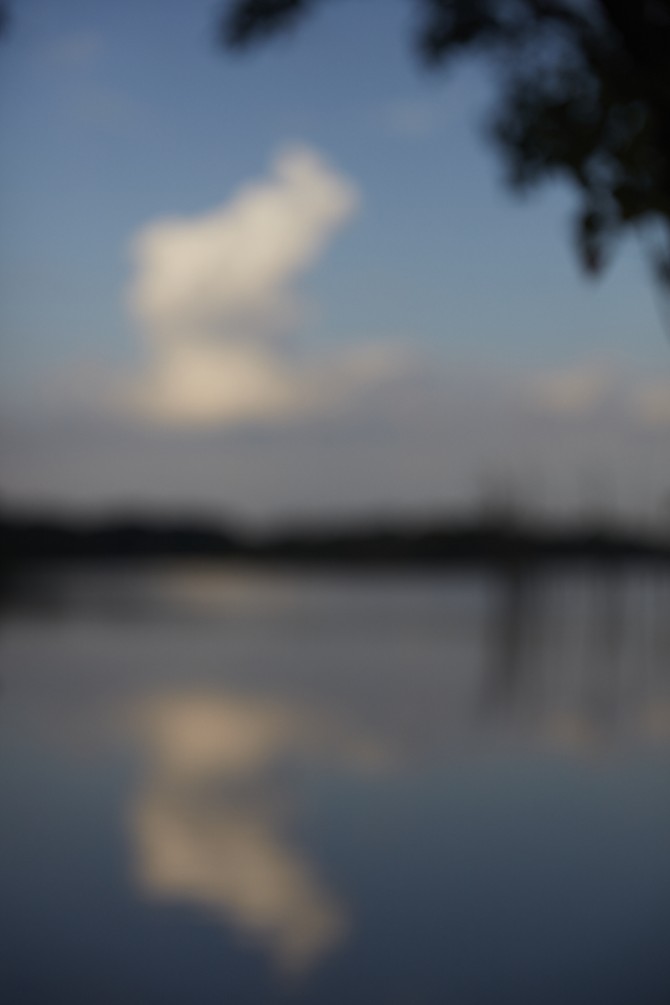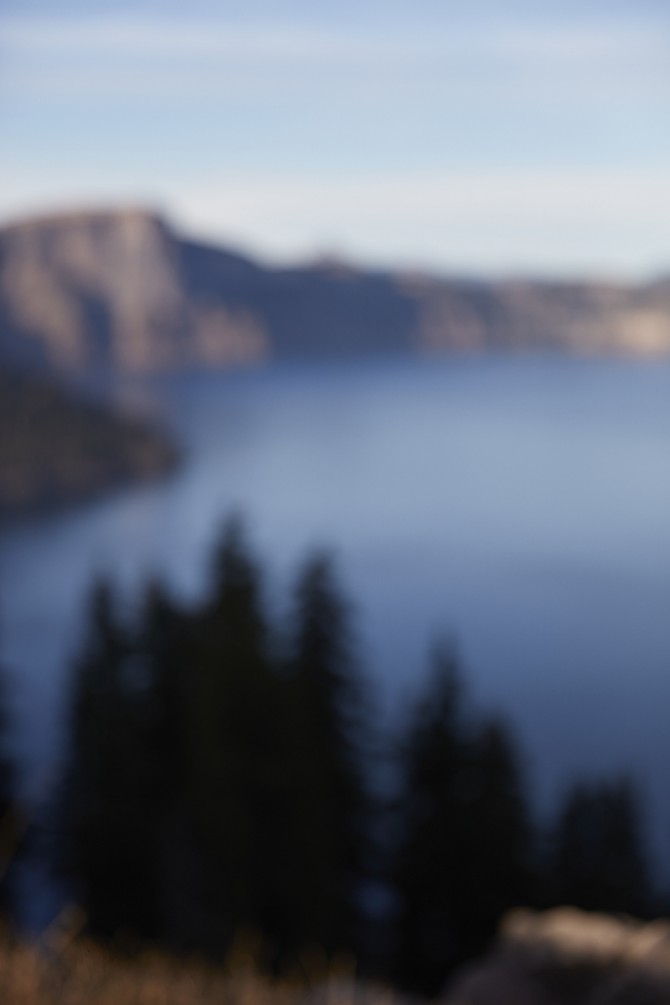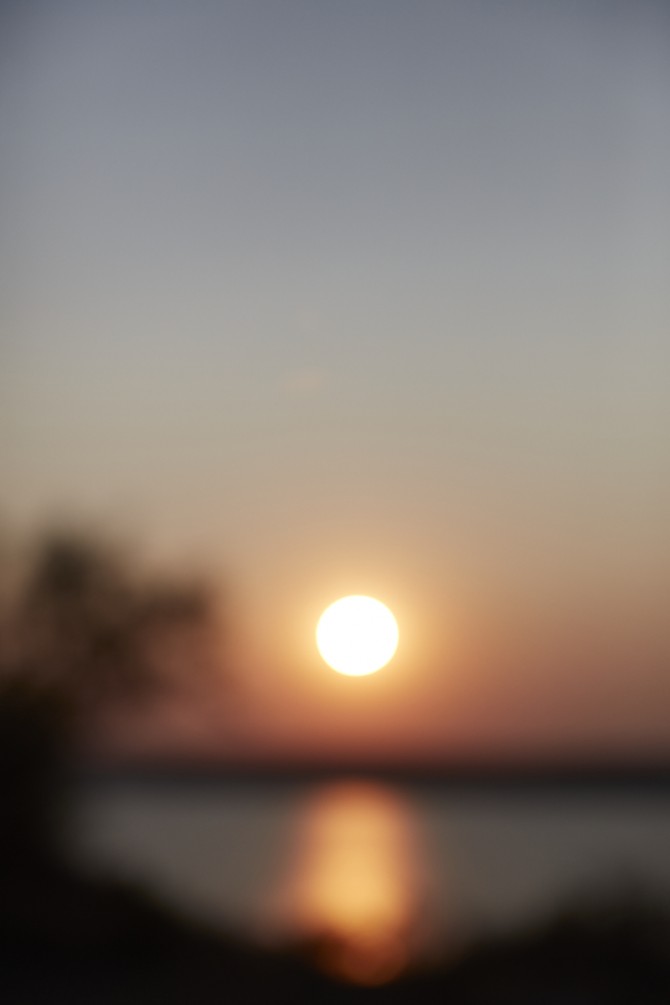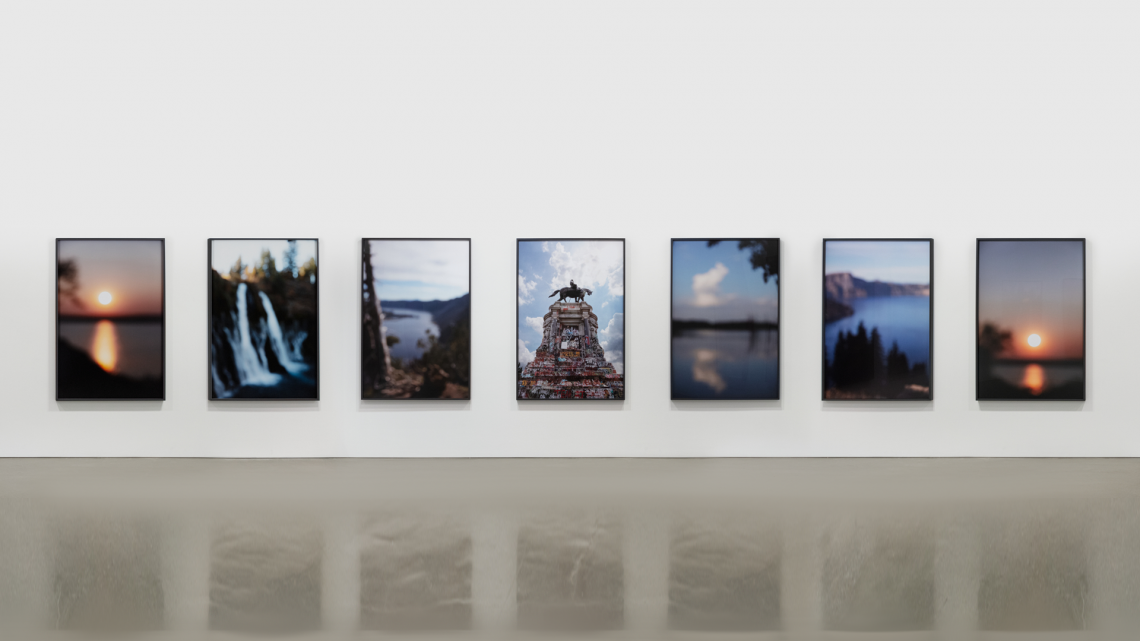
monument/monumental (2020), installation view, 7 pigment prints, 66" x 44" each.
News directly from Cornell's colleges and centers
Catherine Opie on bearing witness
By Edith Fikes
Photographer Catherine Opie believes it is the responsibility of artists to respond to their time, opening the world for themselves and others with their work. When asked to select a work she feels operates this way, a piece she could speak to, Opie chose seven new untitled photographs that together form monument/monumental. The result of a six-week road trip, the piece is part of 2020, a larger body of work-in-progress that reflects what making work during the pandemic looks like.
In simplest terms, monument/monumental is a series of moments of reflection in a year marked by dramatic shifts in everyday life and a national reckoning with the history and current horrors of racial violence in the United States. For 2020, Opie traveled from Los Angeles, California to Richmond, Virginia — a route traced in photographs of landscapes and monuments that question the role both play in identity, community, and cultural life. In her discussion of this particular work and approach to creative practice, Opie shares thoughts on the important role of photography in communicating meaning and bearing witness.
"It is the most current thing that I've made and it's a piece that I feel is very of this time, of this moment. In some ways, it is a poem in photographs — almost as if you're reading scansion but doing it visually. It is more conceptual than purely documentary. We have been so deeply influenced by photojournalism as well as personal social media posts in terms of protesting, for example — I think these are amazing and I'm grateful for them — but I wanted to make a piece that reflects on isolation and the feeling of American landscape right now and also includes the iconic monument that the Black Lives Matter movement has taken over in Richmond, Virginia. So, I went on a road trip in an RV and traveled for six weeks. It was how I could make work during the pandemic. I started to feel itchy about being at home and out of this conversation and felt a need to open up my world with my own images rather than rely mostly on photojournalism.
For this piece, the photographs work on memory, but also operate on a metaphorical level. At this point in time, if you take a very in-focus photograph of nature it is unlikely that you relate to it on a cognitive level, but if you are forced to figure out what you are looking at, then I think the whole encounter has more personal meaning and emotion. The use of metaphor works well with the relative ambiguity of the images, which can be about the land, water, light — or, about how hard we are working to preserve the land and water as we face the extreme threat of a global climate crisis — or, they can say something about the land we literally stole from indigenous people as well as the land that slavery built.
There are elements of time and repetition that are important. In the first and last image, you're looking at the exact same sunset. These photographs were taken at the same place at the same time. In this piece, there is this suspended sun that never quite sets on the history of racism in this country. It is very much about what I was thinking about as I was traveling.
There is also an urgency, especially around notions of democracy and freedom that America touts as first and foremost in our beliefs, while in the meantime there is this deep and long-standing systematic racism, homophobia, and hate crimes. My last show was titled Rhetorical Landscapes, which looked at swamps and politics in these stop-motion-like collages. In monument/monumental, there is also this personal reflection on monumental shifts in my own life and family. I would say my work over the last six years responds to the moment I'm living in as a nearly 60-year-old woman, under the most fascist regime I've ever witnessed.
For this piece, I traveled around to look at monuments. I wanted to see monuments that still exist and places where they were taken down. My wife is from the south, and I'm from Sandusky, Ohio, where there was once a stop on the underground railroad, so we're very aware of different cultural conditions and histories. And, presently very aware, after the hope the Obama presidency brought many of us, the feeling that we've gone backward in time. The monument in Richmond is one of the most important sites of resistance in my mind, asking what the monument itself means now. To me, it is not the same monument. It now stands for something else. And so, are we still calling for it to be taken down? This site was important for me as a way of bearing witness to our time.
Because I was born in the 60s — or, a point when photographs were increasingly included in magazines — photography gave me a sense of what it means to document time. And, because of what was going on then, I understood photography to be linked to things like movements and protests. We often think we take photographs so that in one hundred years someone might be able to look back on them, and I agree that photographs make history, but I'm always thinking about how important photography is as a medium to reflect what is going on right now."
As the first speaker for the John A. Cooper Visiting Artist Lecture Series at AAP, Catherine Opie gave a public artist talk titled The Present is Reflected in the Past on April 5. The series was created with a gift from alumnus John A. Cooper (B.F.A. '97) to bring distinguished artists of particular renown to the Ithaca campus to engage art students and the art community with lectures, studio visits, seminars, and individual critiques with B.F.A. students. As the date of the inaugural lecture approaches, Cooper shares, "I think these interactions between students and visiting artists — especially a world-class artist like Catherine Opie — can add a tremendous dimension to Cornell's already top-notch fine arts education." AAP's B.F.A. program, with 130 students, is distinguished both by its diversity and the intensity and breadth of its artistic and academic study.
Media Contact
Get Cornell news delivered right to your inbox.
Subscribe